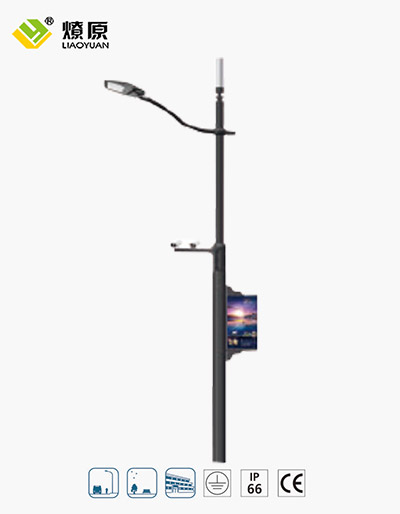Summary:Steel Light Pole
The steel light pole has the best visual appeal, especially for outdoor applications, and its construction ensures durabil...
Steel Light Pole
The steel light pole has the best visual appeal, especially for outdoor applications, and its construction ensures durability. The materials used in the manufacture of the light pole are commercial grade and weldable, with all welds confirmed to AWS D1.1 or E70xx Electrodes. This gives you a long-lasting pole with a good visual appeal. There are two main types of vibrations: first-mode and second-mode vibrations. First-mode vibration occurs when the pole is hit by a gust of wind, causing it to sway and move. The steel light pole is designed to move and resist this type of vibration, making it extremely durable.
Stainless steel light poles date as far back as 1944 in the US, Japan and Europe. These are typically made of austenitic stainless steels. The Canary Islands may have been the first location to use duplex stainless steel for light poles. Type 316 is more corrosion resistant than 2205. Other duplex stainless steel alloys, such as 2205, have been used for light poles and other applications. However, it is important to note that there is no single type of steel for light poles.
Another consideration is price. A steel light pole costs less than an aluminum one. The steel poles will have more shine than the aluminum ones. A key test you can use to determine which type of light pole you are purchasing is how easily it scratches. Aluminum light poles will scratch easily while steel will not. These two types of light poles have very different aesthetic appeal. Ultimately, your choice will depend on your intended use. But, remember that both have their advantages and disadvantages.
If you need to repair or replace a steel light pole, you should consider hiring a qualified technician. Choose someone with specific training in corrosion and coatings. Certifications like NACE or ASNT are also beneficial. Additionally, you should include non-destructive testing as part of your asset management program. Non-destructive testing will identify interior corrosion and wall thickness loss in the pole shaft. Proactive inspections can detect corrosion issues at their earliest stages, allowing you to repair or replace the damaged part.
Aeolian vibration is the biggest issue for straight aluminum light poles. It occurs when the wind passes over the corners and flat surface of the pole. To alleviate this problem, choose an aluminum or steel pole with a round-tapered profile. These models are better for lower wind speeds. Aluminum and steel poles both have their advantages and disadvantages, so choose a type according to your needs. You can also consult United Lighting Standards to find the best pole for your project.
While aluminum and steel light poles have similar lifespans, weathering steel is more corrosion resistant. Aluminum light poles are often used in military zones and air force bases where security is a priority. Tall aluminum light poles are also used in airport runway lighting projects. Besides that, they are also used in military bases and compounds. It's not uncommon to find both types of light poles at a single location. They provide an excellent lighting solution for many areas of the country.

|
| City monitoring |
| Pixel |
200w |
|
focal length |
4. 8-115mm, 23 times optical |
|
Operating temperature |
30℃ 65℃ |
| Video compression |
h265/h. 264/mjpeg |
power supply |
dc12v 18w max |
Working humidity |
Temperature less than 90% |
| Resolution and frame rate |
Support up to 1920*1080@ 30fps HD picture |
Vertical range |
-15° ~90° (automatic flip) |
Protection level |
1p66: tvs 4000v lightning protection, anti-surge, anti-surge, in line with gb/t17626.54 standard |
| Minimum illumination |
Color 0. 005lux @(f1.6, agc on) |
Horizontal range |
360° monitoring without dead ends |
Local storage |
Maximum support 256g |
| Digital zoom |
16 times |
Infrared irradiation distance |
100 metres |
|
